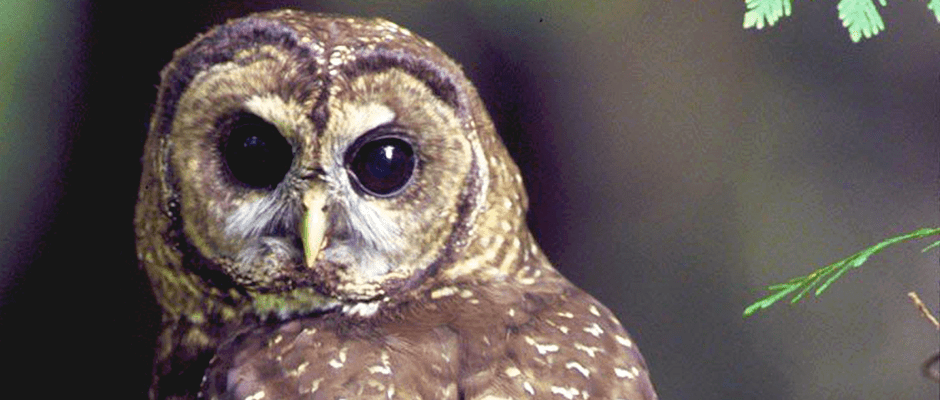Share this article
It’s tall forests, not dense ones, spotted owls prefer
In what is believed to be the largest spotted owl study in terms of area analyzed, remote sensing technology is providing a more precise look at habitat preferences for the sensitive species with implications for greater flexibility in forest management.
“For the last 25 years, forests in the western United States have been managed to protect habitat for spotted owls based on ground surveys that were limited by plots with a small sample area and what could be seen from the forest floor,” said Malcolm North, a research ecologist with the U.S. Forest Service’s Pacific Southwest Research Station and lead author of the study. “We’re employing relatively new technology to get a new vantage point into the forest canopy — across an unprecedented amount of terrain — to better understand what that means for spotted owls.”
Using Light Detection and Ranging imaging, or LiDAR, North and colleagues from partnering organizations studied forest attributes across 1.2 million acres, encompassing 316 documented owl territories, along California’s Sierra Nevada. LiDAR uses laser pulses shot from an instrument mounted in an airplane that can measure a forest’s canopy, including tree height, distribution of tree foliage and any forest gaps.
Whereas previous research led to the assumption that spotted owls needed dense canopy cover (generally estimated at 70 percent or greater) across a broad landscape, LiDAR data revealed it’s more the height of the canopy, as opposed to the expanse of it, that matters most to owls.
The study, “Cover of tall trees best predicts California spotted owl habitat,” recently published online by the journal of “Forest Ecology and Management,” reports spotted owls typically were found in forests with high concentrations of tall trees measuring at least 105 feet in height, but preferably taller than 157 feet. Meanwhile, dense stands of trees measuring 52 feet or shorter were generally avoided by the owls.
“We rarely found owls in high canopy cover without tall trees. We also found owls in areas with tall trees but low surrounding density,” North said. “It’s really the big trees that the owls are selecting for.”
The study’s findings could have implications for land management strategies to improve forest resilience to wildfires, drought, insects and diseases. Forests with tree densities greater than historical ranges — especially with high densities of smaller trees — are more susceptible to extreme wildfire behavior or vulnerable to the effects of drought, insect infestations and disease.
“While land managers may have felt compelled to maintain these abnormally high densities to adhere to the 70 percent canopy cover threshold, it might also have placed forests and owls at risk,” North said. “The large trees favored by spotted owls can typically withstand low to moderate wildfires and other disturbances. But when exposed to extreme wildfires from high fuel loads or when their vigor is compromised by too many trees competing on the landscape, these tall trees can become vulnerable.”
Researchers also studied how large openings in the canopy or gaps in the forested landscape, ranging from 0.03 to greater than 2.5 acres, impacted owl use or nest site selection.
“Land managers may have been leery of creating gaps in the landscape because of the reduction in canopy cover,” North said. “But other than avoiding placing their nests directly adjacent to a gap, owls showed no difference in the areas they used compared to the surrounding landscape with regard to gaps.”
North and his colleagues’ study comes on the heels of a newly available report synthesizing the last two decades of research pertaining to spotted owls. “The California Spotted Owl: Current State of Knowledge” was made available online by the Forest Service’s Pacific Southwest Research Station. The report represents a comprehensive review by scientists of the ecology, habitat use, population dynamics and current threats to the viability of the California spotted owl.
The U.S. Forest Service is a Premier Partner of The Wildlife Society.
Header Image: Because of the sensitive nature of spotted owl populations, western forests in the United States have been managed to protect spotted owl habitat under the premise that the owls require expanses of dense canopy. A new study making use of airborne technology has found that it is more likely canopy cover from tall trees — as opposed to overall canopy cover — that the owls select for. ©USFS








